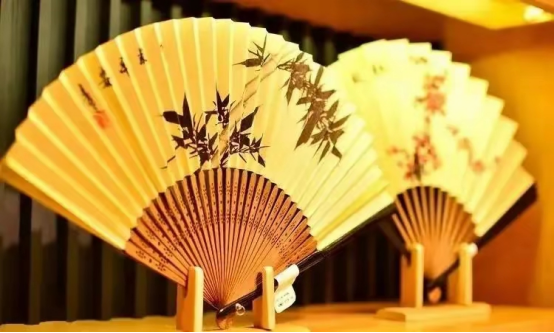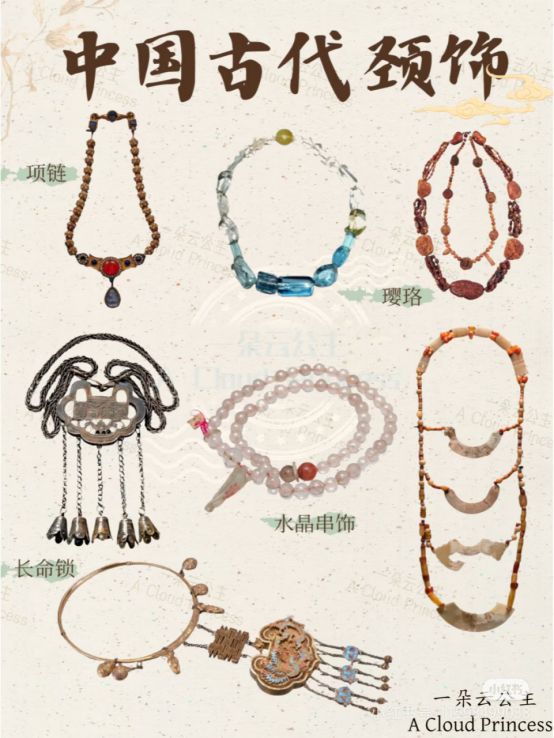Ancient people faced the scorching heat not only by modifying their clothing but also invented fans as cooling items. In modern times, we no longer need fans to drive away the heat, the cultural connotations and traditional symbols embedded in Chinese fans are worth exploring. Over time, ancient fans have evolved into relatively fixed forms, with their primary functions gradually fading away, becoming cultural items that many pursue to showcase their elegant demeanor and appreciation for Chinese culture. The main types of traditional Chinese fans include folding fans, round fans, and xuan fans. Today, we will explore the cultural connotations and contemporary innovations of handheld fans represented by Chinese folding fans.
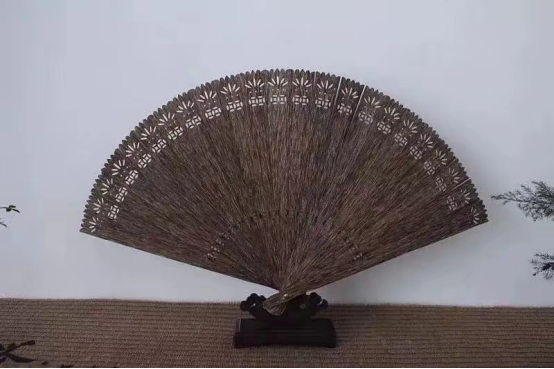
When did folding fans first appear?
“The pure one sweeps away dust, the cool friend invites fresh breeze,” where the characters “pure” and “cool” highlight the refinement of folding fans. Holding a folding fan exudes an elegant demeanor with every gesture. Folding fans first emerged during the Song Dynasty but gained prominence in the Ming Dynasty. They consist of fan ribs, fan surfaces, and fan nails. The fan ribs are divided into large and small ones, with the largest being the outermost two pieces that serve as the face of the fan. The fan surface is made of folded bamboo paper or more precious silk and brocade laid on the ribs. Fan nails are the pins at the bottom that secure all the ribs together for stability. Thus, a basic folding fan is completed.
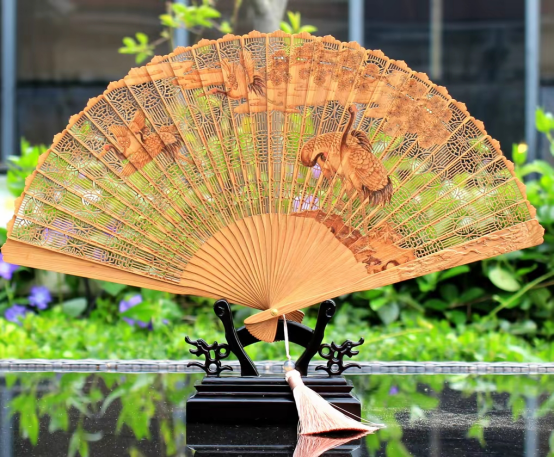
Material requirements for fan ribs
Fan rib materials are meticulously chosen. Considering frequent use, the material must be wear-resistant, hard, and slightly flexible. Bamboo seems ideal, but raw bamboo is high in moisture and not resistant to corrosion, so it cannot be used directly as a fan rib material. Therefore, ancients boiled bamboo, then air-dried and polished it. High-end folding fans would further carve patterns onto them. For the fan surface, various fabrics are used, but they must have good abrasion resistance without easily fracturing. After painting, ink-washing, or calligraphy on the surface, a process called “three blanchings and nine dyeing” is applied to deeply integrate the surface with paint and calligraphy, ensuring durability for a hundred years before drying for preservation. The holes for fan nails and their installation must be tailored to the specific size and style of the folding fan to ensure sufficient sturdiness.
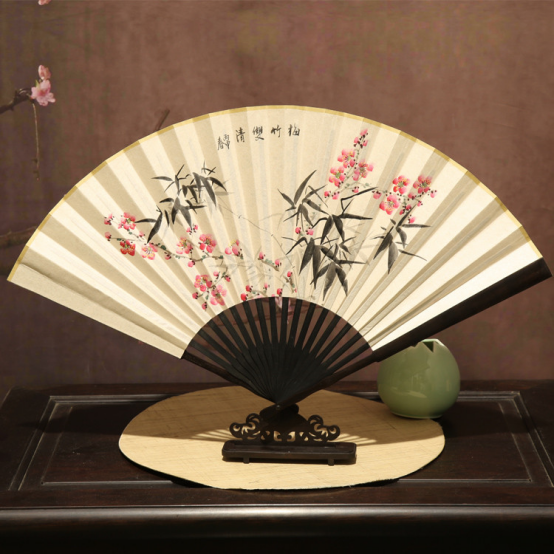
Chinese folding fans have evolved into several main types: Jinling folding fans, silk folding fans, Rongchang folding fans, and portrait folding fans, each with unique cultural connotations but sharing a common emphasis on elegance and refinement. Different patterns and calligraphy on folding fans represent diverse cultural characteristics and spiritual concepts—painting bamboo symbolizes noble integrity, floral patterns represent nobility and elegance, while calligraphy reflects the owner’s values. A folding fan is not just a masterpiece of craftsmanship but embodies the subtle beauty in Chinese culture and the aesthetic concept of “harmony in diversity.” It represents the proud spirit of countless Chinese people. A delicate folding fan not only brings a gentle breeze but also encapsulates the era’s essence of outstanding Chinese traditional culture.
Hanfu: Match with Folding Fans or Round Fans?
You can match hanfu with either folding fans or round fans. Choose based on the hanfu style, occasion, and your personal taste. Folding fans feel more graceful and scholarly, while round fans show softness and modesty. Each has its own focus in different historical periods and cultural scenes.
Folding Fans vs Round Fans: Matching Features
Folding Fans
Pros: Light and easy to carry. Opening and closing it brings a scholarly grace. You can customize the fan surface with paintings or calligraphy to match your hanfu’s colors and patterns—it works well with many styles.
Cons: Has sharp lines; mismatches can make it look too serious. Heavy fan bones (like jade or metal) may ruin the hanfu’s light feel.
Recommended Matches:
- Ming-style hanfu + jade folding fan (highlights luxury)
- Song-style hanfu + bamboo folding fan (fits elegance)
- Hanfu with modern touches + wooden folding fan (balances classic and modern)
Round Fans
Pros: Its round shape fits the traditional “perfection” meaning. Embroidery or silk surfaces easily show women’s softness. Holding it to cover your face adds a shy, gentle beauty.
Cons: Hard to store; less useful than folding fans. Overly detailed embroidery may steal the hanfu’s focus.
Recommended Matches:
- Tang-style high-waisted ruqun + peony-patterned round fan (boosts grandeur)
- Ming-style mamian skirt + plain silk round fan (highlights dignity)
- Cheongsam + ink-painting round fan (blends classic charm)
Historical Origins & Cultural Meanings
Folding Fans: Started in the Song Dynasty and became popular in the Ming and Qing Dynasties. They were a status symbol for scholars. People wrote poems or painted on fan surfaces—this made fans useful for social gatherings. For example, in The Peach Blossom Fan, Li Xiangjun used a fan to show her loyalty, giving folding fans the meaning of faithfulness.
Round Fans: Have been closely tied to women since the Han Dynasty. Ban Jieyu’s Poem on the Round Fan used the fan to express feelings. In the Tang Dynasty, the “fan-hiding ceremony” became part of weddings—it stands for a happy marriage and modesty.
Why Is Navy Blue Folding Fan So Popular in the Hanfu Community?
People love deep navy blue folding fans in the Hanfu world! At a recent traditional fair, nearly everyone carried these elegant fans. Their color isn’t pure black or dark blue—it mimics twilight skies, calm yet striking. Since Hanfu values balanced designs, simple fans with carved details perfectly match robes. They cool wearers while adding subtle style highlights. That’s why more fans choose them daily.


